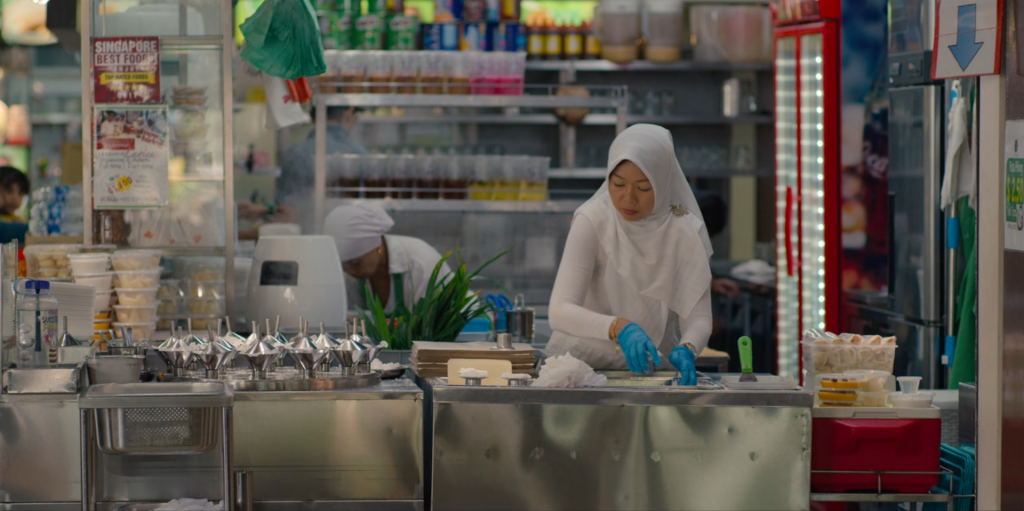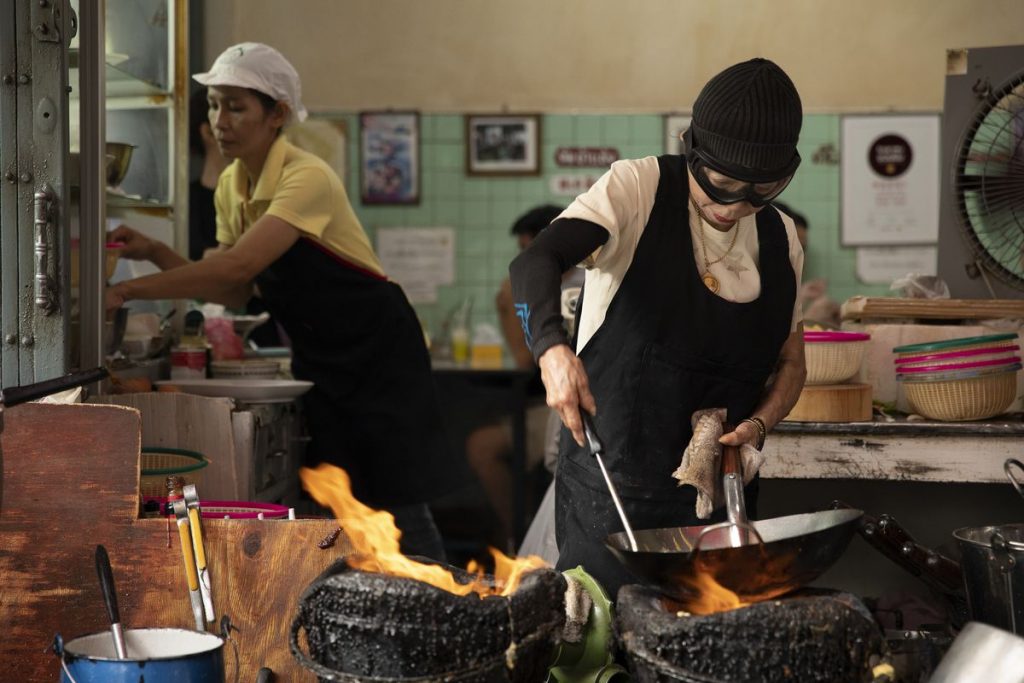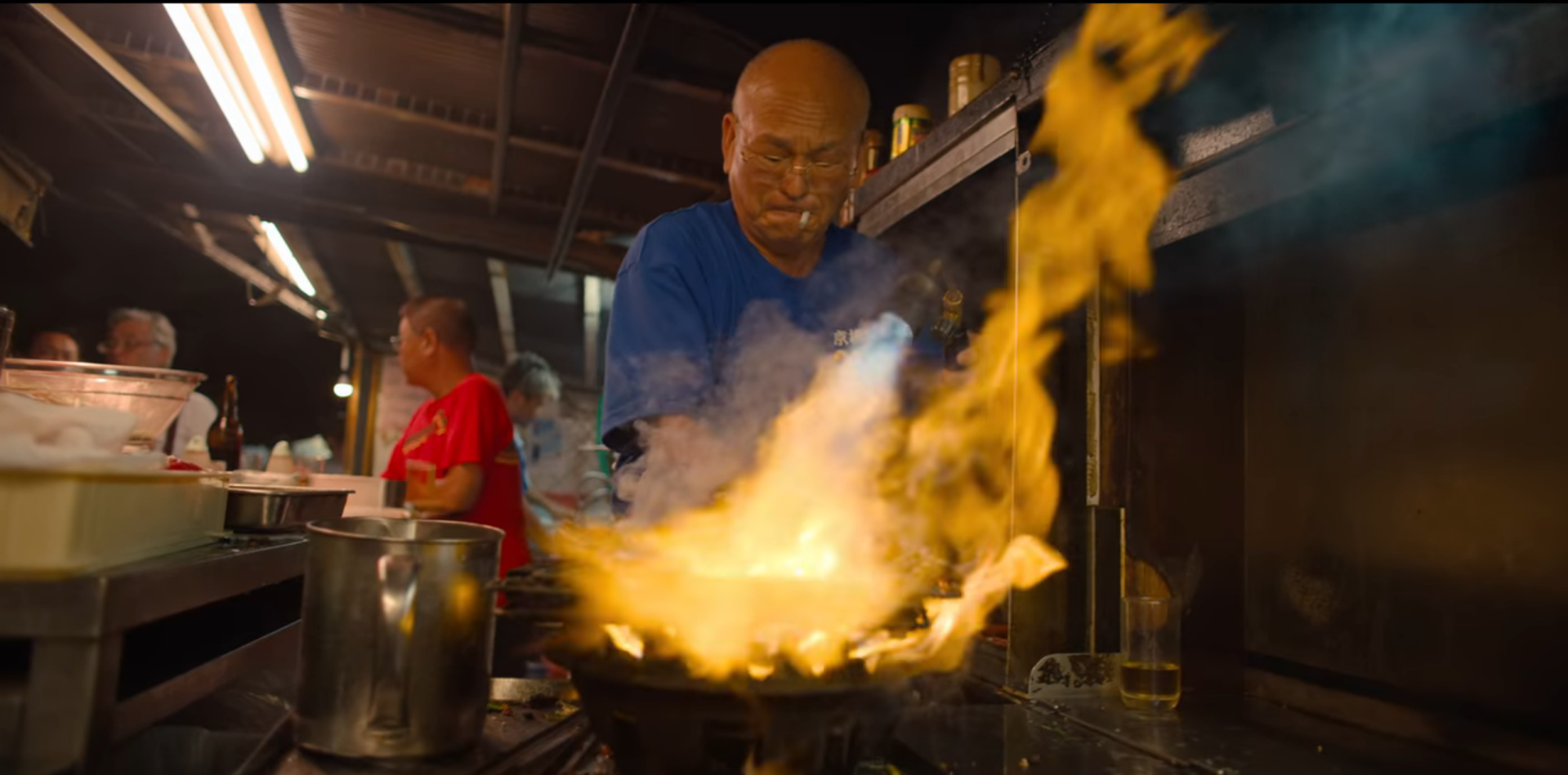Earlier this year, when news emerged that Singapore was featured in an ‘Asian street food documentary’ while Malaysia was not, Twitter predictably blew up. Malaysian foodies went through the seven stages of grief, from anger (’Singapore doesn’t have shit’) to denial (’more for us in the end’) to acceptance (’if it doesn’t receive global recognition, so be it’), and back to anger (’Does Singapore even have a street for street food’).
Some blamed the producers for being ignorant. Others blamed Malaysia’s own tourism bureaucrats, and wrote soul-searching editorials in The Star.
Get over it, my dudes. Whatever you think of Singaporean food versus Malaysia food, the Netflix documentary is pretty tepid—at best. Not terrible, but definitely ‘not worth queuing for’ either.

The voice-overs plus B-roll—check. The gratuitous use of slow-motion—check. The quasi-religious reverence for its chefs/hawkers as if they were latter-day saints—check and double check. And just like Chef’s Table, Street Food is so beautifully shot that even hardened cynics might feel a deep stirring in their loins.
Spring onions cascade. Steam rises in undulating waves like some kind of curbside aurora borealis. Finally, a Crab Omelette emerges from the Wok like the Botticelli’s Venus rising from the Aegean.
Everything was beautiful and nothing hurt.
This is all good if you just want some food porn, but I was led to believe that Street Food was a real documentary.
It really isn’t. Peel away the Tiger Beer-inspired aesthetic and you won’t find much except the usual platitudes of food writing. You will find a show so intent on celebrating its hawker heroes—and elevating food—that they forgot to tell us how street food came to be.
This is a crying shame because the stories of those who cooked the actual food are equal parts compelling and heartbreaking. In the Singapore episode, we learn about Ms Aisha Hashim, who was forced to quit her culinary ambitions in America and return to save her family’s Putu Piring business (Traditional Haig Road Putu Piring).
In Osaka, we learn about Toyo of Izakaya Toyo, a chain-smoking, blow-torch-wielding ‘clown’ whose gregarious personality conceals a deeper sorrow.
In Bangkok, we meet Jay Fai, a seamstress turned Michelin-darling who earned the establishment’s respect through sheer grit and ballsy innovation.
In each story, food is not just occupation, but redemption. For some, it’s a means out of poverty. For others, it’s something even more personal. Toyo, for example, never fulfilled his dream of starting a family, so his Izakaya—both customers and staff—became the only family he’s got.

We are told, for example, that Delhi is a “melting pot of various cultures and empires” from “the Rajputs to the Mughals to the British empire”. What we are not told, however, is how this ‘melting pot’ has influenced street food.
In Indonesia, street food is said “to represent the city’s culture and people”, but—wait a minute sir —how did the people come to develop such strong pride for their Cassava noodles and Braised Jackfruit?
Another mystery. Their experts either did not answer or had their answers cut from the program to make room for more close-ups of gula melaka.
The words ‘authentic’, ‘real’ and ‘honest’ are used more often than chili, but in a manner so glib that the word is rendered meaningless. The Lechon (roast pig) in Cebu is praised by one critic as ‘real’ and ‘authentic’. But how is it more ‘real’ and more ‘authentic’ than the Lechon served in an Manila restaurant?
What does ‘authentic’ even mean in this context?
Therein lies the flaw of Street Food—it’s an unabashed eulogy, not a documentary. Every expert or journalist interviewed tells us that street food “unifies” people, and how it’s part of the nation’s ‘identity’, but these broad cliches are never elaborated on. The forces that produced street food—urbanisation, colonialism, migration—get a cursory mention before the camera cuts back to an omnipresent Wok.
The real question, of how street food came to form such a strong part of Asian national identities, is a question left unanswered.
Likewise for street food’s increasingly precarious existence in a rapidly-modernising Asia. In Bangkok, for example, we are told that street food is getting hounded off the streets by a government which considers them ‘leeches’. What happened to Singapore about thirty years ago—the move to hawker centres—is happening right now in Thailand.
This strikes me as an interesting subject worth exploring.
Is street food still street food if it was born on the streets but has since moved into a shophouse? Will regulation kill off street food for those less able to afford it after property taxes and rentals pump up prices?
These are rhetorical questions because David Gelb and co did not return to examine the forces that threaten his beloved street food. For all the lip service that’s paid to ‘culture’ and ‘tradition’, the story is laughably short on detail and insight. Overall, you get the uneasy impression that Mr. Gelb is more interested in touristic affirmations of ‘authenticity’ than the food itself.

The chefs/hawkers are fascinating, the experts are personable, and the cinematographers clearly know their shit. But for all its premium ingredients and expensive spices, the show still manages to tell an incoherent story about food.
One minute it’s a motivational poster about hawkers overcoming adversity. The next it’s a meaningless rojak of buzzwords like ‘identity’, ‘pride’, and ‘tradition’.
In the end, Street Food is a food documentary that represents a regression in quality. It is not as critical as David Chang’s Ugly Delicious or as unflinchingly honest as Bourdain’s No Reservations.
However beautiful it might look, it’s not a dish that will make you full.






